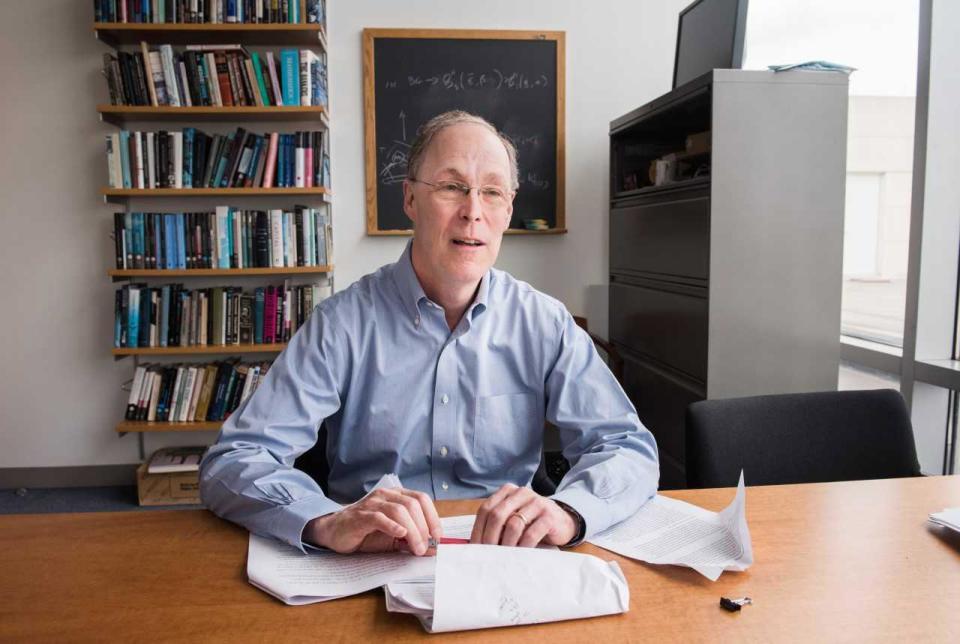Seeds for new financial crisis 'being planted', warns economist Douglas Diamond

One of the world’s top financial economists has warned that, a decade after the fall of Lehman Brothers, the “seeds are being planted” for the next destructive financial crisis.
Professor Douglas Diamond of the University of Chicago is the author of a canonical theoretical model of bank runs and last week was awarded the triennial Onassis prize in finance.
Speaking to The Independent, Professor Diamond said his current research on the financial system made him concerned that credit, or liquidity, was once again being granted too liberally, just as it was before the 2008 meltdown.
“We’ve certainly had a lots of liquidity injected recently. One thing you see is this huge increase in what’s called leveraged loans – high-yield, syndicated loans. And very few covenants in those loans,” he said. “That’s an indicator to us that we could be planting the seeds of the next crisis.”
Professor Diamond refused to be drawn on when, or where in the financial system, the next crisis could break out, saying “if you think crises are about fear and panic they’re almost by definition unpredictable. [And] they may come up in a place that’s different from where they came in the past.”
On a more positive note, Professor Diamond said large global banks, which were the primary vector of financial contagion a decade ago, had been forced by regulators to maintain much larger capital and liquidity buffers – to absorb losses and ride out market stress – than they did a decade ago.
But he warned against this instilling to a sense of complacency among regulators.
“The whole world of regulators [and] central bankers has been trying to design macro-prudential regulation. Essentially people thought about it and ran regressions about what would have worked in the past. But we have absolutely no evidence on how it’s working. So at this stage it’s a matter of hoping that we got the diagnosis correct because we don’t really have any data yet.”
Professor Diamond added that this was the reason why it was worrying that the Trump White House has been talking about deregulating Wall Street for the sake of boosting US growth.
“Give the current regulations a little bit of time to work and see which ones work well and which don’t,” he said.
The International Monetary Fund sounded its own alarm about debt last week, pointing out that global borrowing – or leverage – has hit $164 trillion, higher as a share of global GDP than it was in 2009.
Outstanding leveraged loans in the US – which provide high interest finance for companies with weak credit ratings and in which many retail investors have indirectly invested – more than doubled to $930bn between 2007 and mid-2017, according to Bloomberg.
One of the Trump administration’s proposals has been to scrap new rules to protect leveraged loan buyers.
In 1983 Professor Diamond, along with Philip Dybvig, published a model showing how banks’ traditional financing of illiquid assets such as mortgage loans with liquid liabililties such as customers’ deposits could result in a self-fulfilling panic and a customer run.
The fact that banks were prone to destructive runs was, of course, well known from history. But the Diamond-Dybvig model showed precisely why they happened at the level of the individual institution – and gave a clear steer to regulators on what policies, such a state deposit insurance and capital requirements, were necessary to make banks less unstable.
“We were right out of graduate school. We realised that this was a simple idea and we should write it in a way that bank regulators and other economists could read it,” Professor Diamond said.
The 1983 Diamond-Dybvig paper, “Bank Runs, Deposit Insurance, and Liquidity”, is now one of the most frequently cited by other scholars in economics.
Professor Diamond described winning the 2018 Onassis prize, which comes with a $200,000 award, as an “amazing honour”, noting it has previously been awarded to two of his mentors, Eugene Fama and Stephen Ross. “This was a pleasant surprise and a big deal to me,” he said.

 Yahoo Finance
Yahoo Finance 